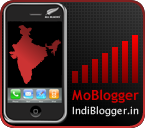- Beggars can't be choosers. Besides, making good choices is probably not their forte.
- Behind every great man is a great woman. Behind her is the guy's wife, and boy is she pissed.
- The best defense is a good offense. And gun turrets.
- Better to light a candle than curse the darkness. Save the cursing for when the candle spills hot wax on you.
- A penny saved is a penny earned, but if you're counting the pennies, you're screwed.
- Neither a borrower nor a lender be. Just take the damn thing.
- Where there's a will, there's a way to contest it.
- Two wrongs don't make a right, but three lefts do.
- Good things come to those who wait tables.
- Haste makes waste. Donuts make waist.
- Honesty is the best policy, but the premiums are unaffordable.
- If we were meant to fly, we'd have wings. If we were meant to be too fat to fly, we'd have wings with ranch sauce.
- Love is blind. This explains why it feels like it keeps whacking you with its cane.
- Misery loves company. Especially this one company I used to work for.
- Nature abhors a vacuum. So does my house.
- Time wounds all heels.
- Forewarned is forearmed, but oblivious is elbowed in the gut.
- If you can't beat them, join them to a chair with duct tape. Then beat them.
- Money is the root of all evil. So money does grow on trees; you just have to dig for it.
- Blood is thicker than water. But give it a good scrub and the cops will never know.
- Charity begins at home. Or so my neighbour kids told me when they begged 5 bucks off me.
- Cleanliness is next to godliness. But it's even closer to annoyingliness.
- The early bird catches the worm. So sleep in, unless you like worms for breakfast.
- Discretion is the better part of valor. But it's the most critical part of cowardice.
- Don't punch a gift horse in the mouth.
- It takes one to know one. But it doesn't take anything to know nothing at all.
- Laugh and the world laughs with you. Cry and the world laughs at you.
- A person is known by the company he keeps. Especially the CEO.
- A picture paints a thousand words. But they're really tiny and hard to read.
- A rising tide lifts all boats. Then it smashes them on the rocks.
- Crime doesn't pay. But the perks are awesome.
- He who hesitates is lost. You can tell because he's looking at a map.
- It's no use crying over spilled milk. Acid, however, is worth a complete breakdown.
- Let sleeping dogs lie. But torture the cats for the truth.
- Many hands make light work. But electricity makes lights work.
- A friend in need is a friend in debt.
- A good man is hard to fine.
- A journey of a thousand miles begins with a single step. So don't even start or you'll be walking for friggin' ever.
- A little knowledge is a dangerous thing. But not as dangerous as a little dynamite.
I think that's enough for today..... more to come soon.















.jpg)











